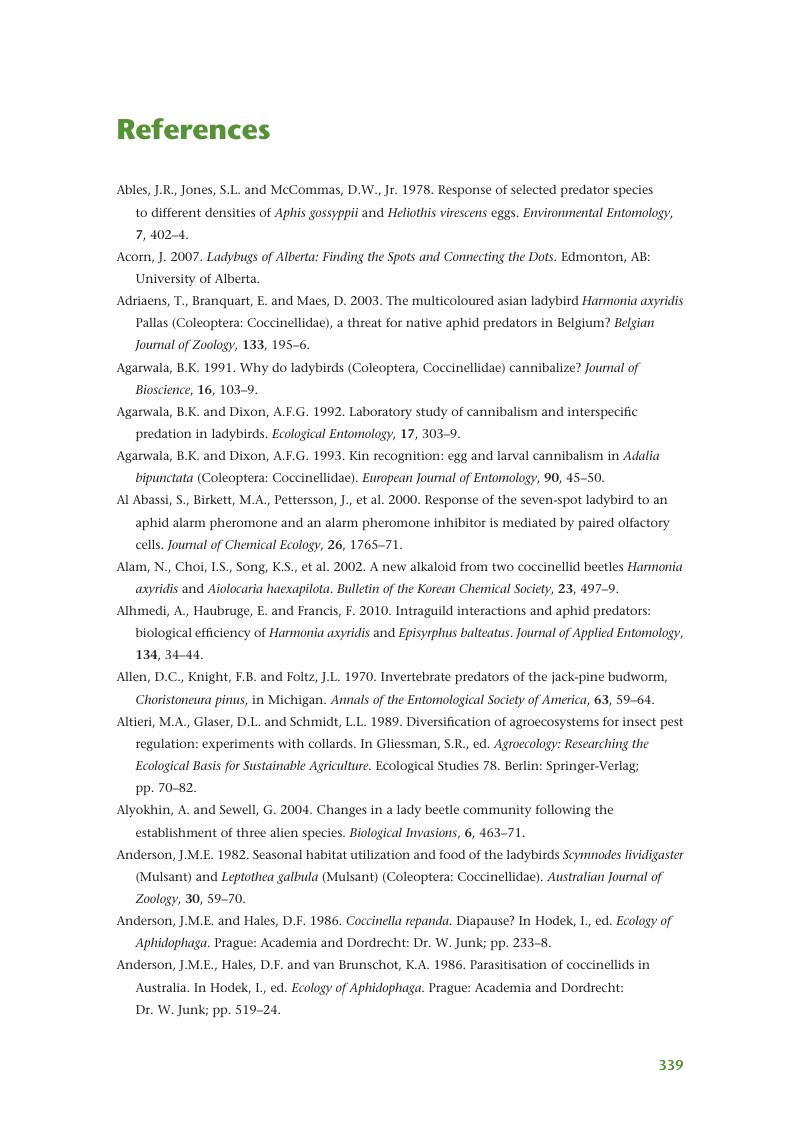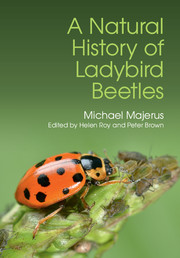Book contents
- A Natural History of Ladybird Beetles
- A Natural History of Ladybird Beetles
- Copyright page
- Contents
- Editors’ Foreword and Acknowledgements
- Chapter 1 Ladybird, Ladybird…
- Chapter 2 The Structure of Ladybirds
- Chapter 3 Where Ladybirds Live
- Chapter 4 What Ladybirds Eat
- Chapter 5 Sex and Reproduction
- Chapter 6 Ladybird Dormancy
- Chapter 7 Ladybird Death
- Chapter 8 Ladybird Colouration
- Chapter 9 Variation and Evolution in Ladybirds
- Chapter 10 Ladybirds and People
- References
- Index
- References
References
Published online by Cambridge University Press: 25 November 2016
- A Natural History of Ladybird Beetles
- A Natural History of Ladybird Beetles
- Copyright page
- Contents
- Editors’ Foreword and Acknowledgements
- Chapter 1 Ladybird, Ladybird…
- Chapter 2 The Structure of Ladybirds
- Chapter 3 Where Ladybirds Live
- Chapter 4 What Ladybirds Eat
- Chapter 5 Sex and Reproduction
- Chapter 6 Ladybird Dormancy
- Chapter 7 Ladybird Death
- Chapter 8 Ladybird Colouration
- Chapter 9 Variation and Evolution in Ladybirds
- Chapter 10 Ladybirds and People
- References
- Index
- References
Summary

- Type
- Chapter
- Information
- A Natural History of Ladybird Beetles , pp. 339 - 383Publisher: Cambridge University PressPrint publication year: 2016



